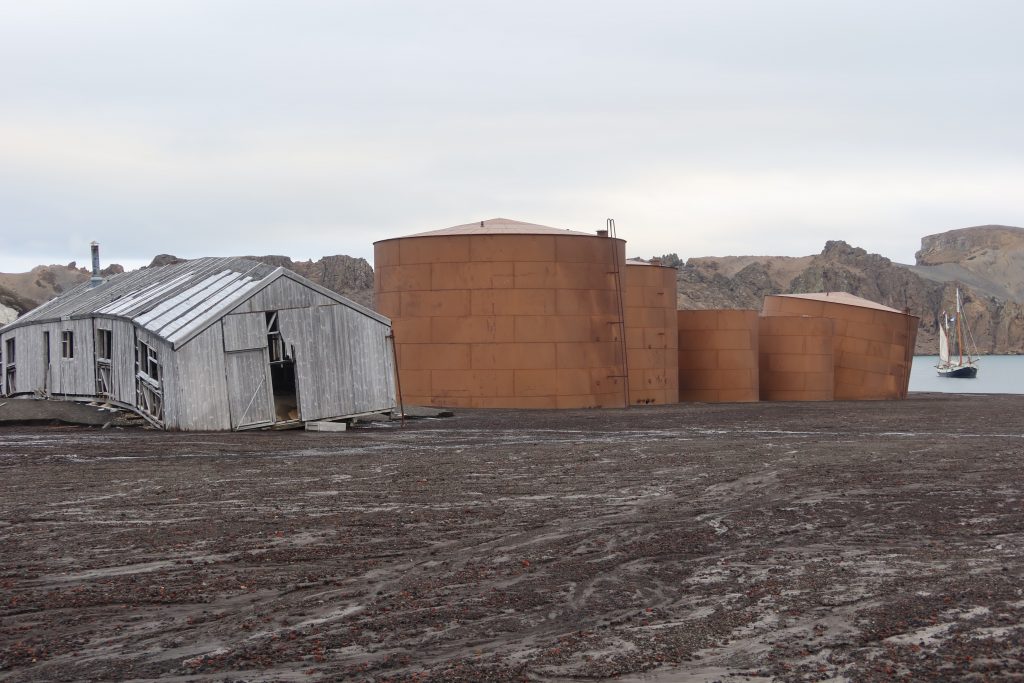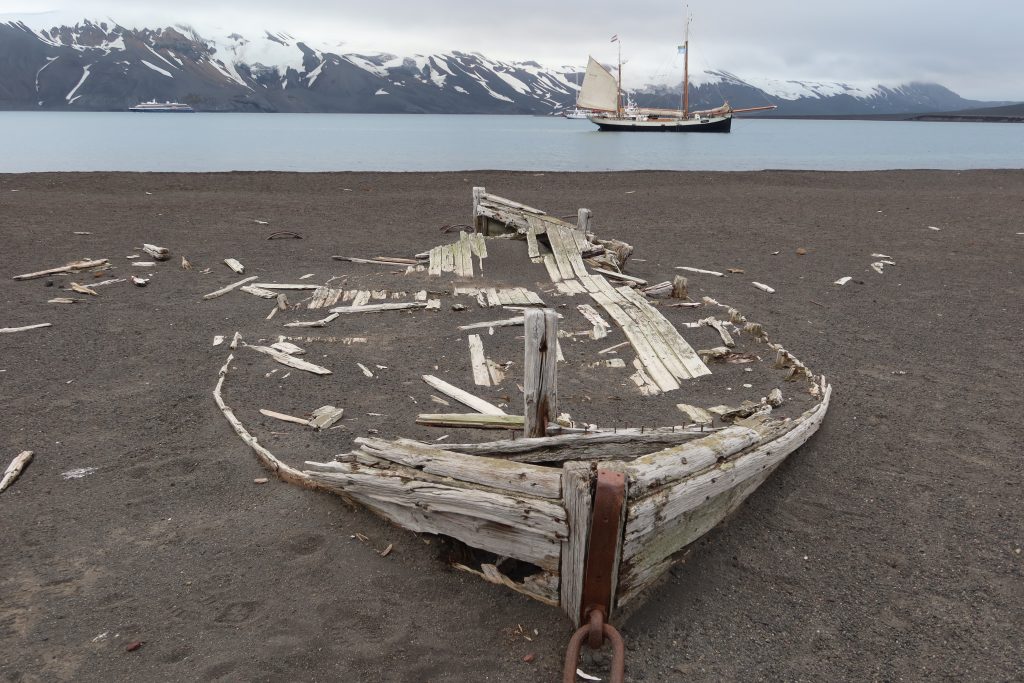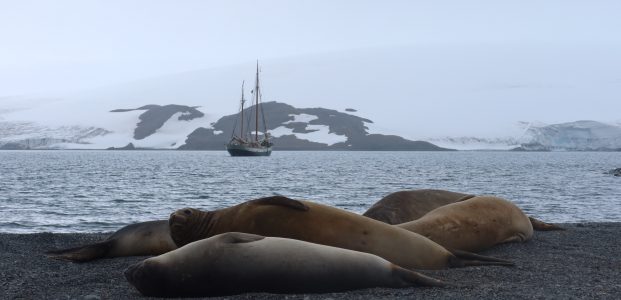Early morning on the 31st we heard the engine go on, a lot earlier than expected. We all headed up on deck and it turned out that the wind change to the west had swung us round, meaning that we ended up much closer to the beach. That and the fact that ice was blowing straight into the bay had rapidly persuaded Gijs that this was not a place to linger!
This also changed plans slightly, so rather than heading west, we motored east aiming for Yankee Harbour- a natural harbour on the southern side of Greenwich Island. The entrance is close round the tip of a natural spit, perhaps a moraine end and once in is very sheltered from most wind directions. We anchored up and headed ashore to see the gentoo penguin colonies along with elephant seals and a new type of seal – a Weddell seal. They are quite solitary animals and seemed fairly oblivious to us, though there were only a couple of them on the beach. They spend most of their time at sea and can survive all year round in the water, using their teeth to make air holes to breathe through in wintertime.
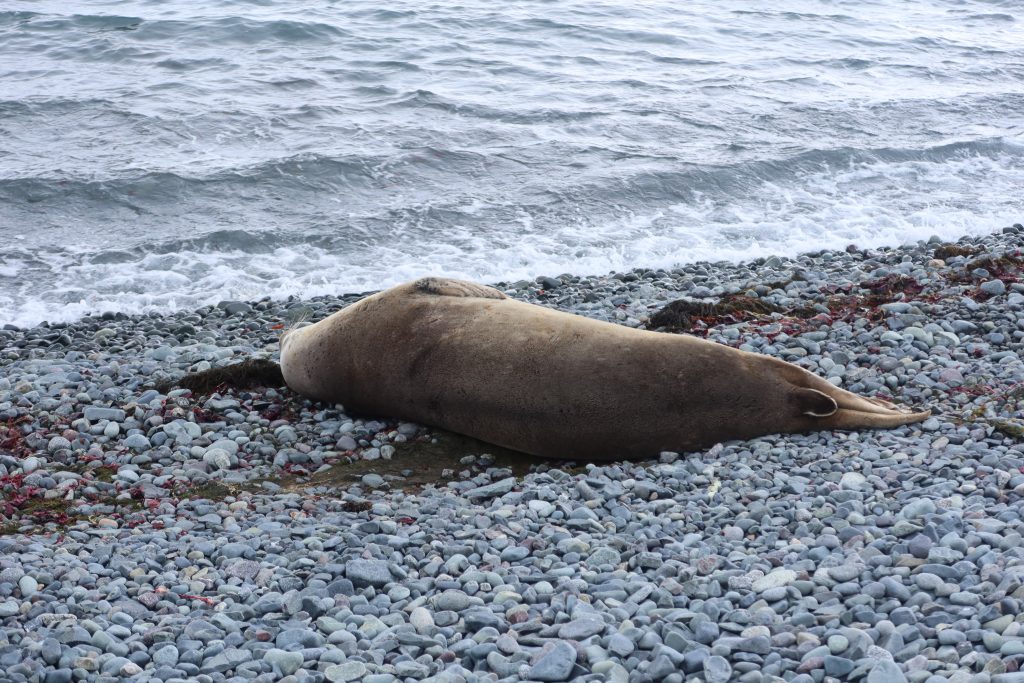
Once the Zodiac was hoisted back on board we upped anchor and headed south past Half Moon Island. Our destination was Deception Island, but on the way we were treated to the most magnificent display by a pod of fin whales. They were so close that the engine was quickly turned off (animals have right of way here in every case) and this seemed to make them even more inquisitive. We counted four in the pod and they swam round and round the boat, so close that at times the blow was washing over us. Every detail of them slowly emerged. First you saw the white on the right-hand side of their mouths and then, as they gently arched their backs, you saw the ridges protecting the blow hole, the long run of their back and finally, when you thought that they couldn’t possibly be any longer, their small dorsal fin was revealed. Normally the flukes never came above the surface, but occasionally they seemed to twist to look at us and their tails would just emerge, almost as if they were wondering what this weird black metal whale was up to. Eventually they dived away, presumably to feed, but not before the bleeping and clattering of camera shutters going off created a weird background track to the whale noises. Apart from occasional exclamations of surprise and amazement, we were mostly stunned into silence!
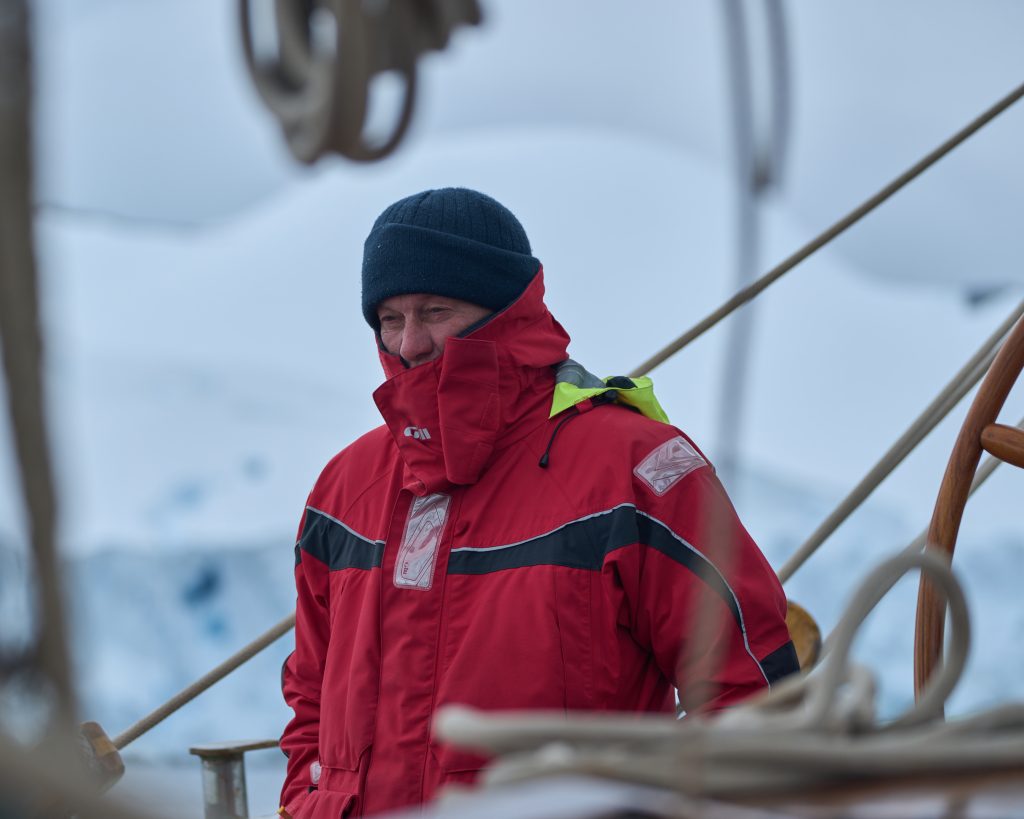
We arrived off Deception Island around 5pm and passed Baily Head and the oddly-named sewing machine rocks before turning into Neptune’s Bellows. We were lucky that Neptune was having something of a break from bellowing, but it was clear why the entrance was named this way. With high cliffs either side of the narrow entrance to the caldera of the volcano, you could well understand that the wind could whistle through the gap making it difficult to enter or exit. Once through the bellows we turned straight into Whalers’ Bay and anchored just off the beach. The beach in this case though was black volcanic sand. Deception Island is an active volcano, though the collapse of a small section has allowed the sea in to flood the five mile wide caldera. The collapse of the caldera came after the eruption of a 30km3 ash deposit. There is still extensive thermal activity and the last major eruption was in the 1970s producing powerful explosions and dense clouds of ash and black basalt cinders. Two research stations – one British and one Chilean – were damaged in these explosions. There are hot springs in various places around the island and the water by the beach where we landed is warmer, but only marginally, than elsewhere. Still, this was enough to persuade one of our number to go for a swim. The rest of us politely declined with a range of creative excuses.
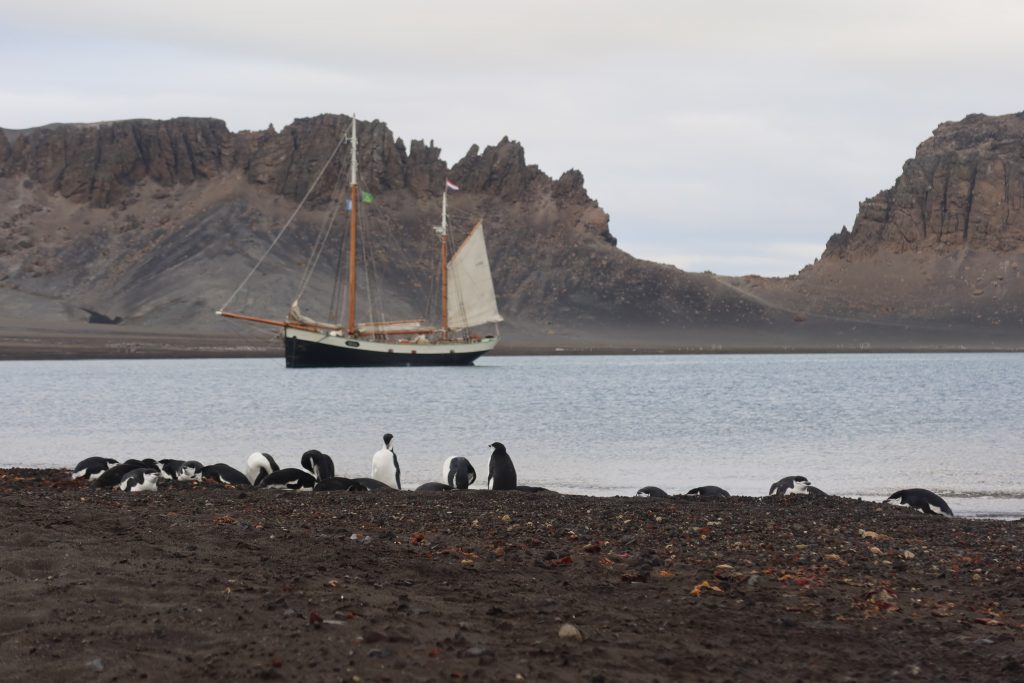
Ashore we walked around the remains of the old whaling station. Whale oil tanks, oil cookers, barrels and even the hulls of old boats littered the bleak black volcanic landscape giving it an air of desolation. It is hard to imagine what life would have been like for the people manning this station. The remaining buildings were collapsing fast on the shifting volcanic sands and one of the most complete was the aircraft hanger, but even this looked like it may disintegrate at any time.
Back on board we celebrated New Year though the exact timing of this was perhaps slightly ignored after a full day of activity all around the islands.
